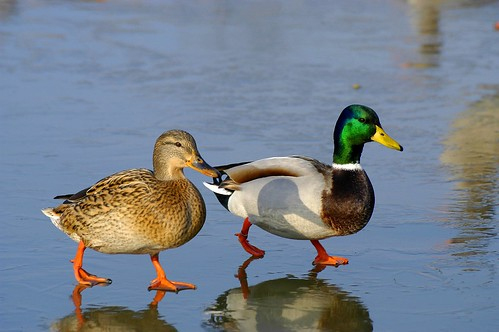This page tells about the Mallard. It is part of our water birds series.

Description
The Mallard is probably the most recognized duck in America. Measuring about 18 inches in length, the drake (male) has an iridescent green head and bright yellow bill. It has a white ring around the neck, maroon breast, and gray body. The legs are bright orange. The male mallard also has a black tail with two feathers curls that extend from the top, which are visible at close range. In flight, both the male and female show blue speculums (wing feathers). Female mallards are entirely mottled brown.
Diet
Insects, seeds, invertebrates, acorns, acquatic vegetation. Mallards, like most dabbling ducks, tip upside-down in the water in search of food.
Range and Habitat
The Mallard breeds throughout Canada and the northern two-thirds of the United States. In winter, it is found throughout the lower 48 states and northern Mexico. Mallards can be found in lakes, ponds, puddles, marshes, rivers, streams. They are sometimes found far from an obvious water source.
Status
The Mallard is America's most common duck.
Related activities
Advertisement

